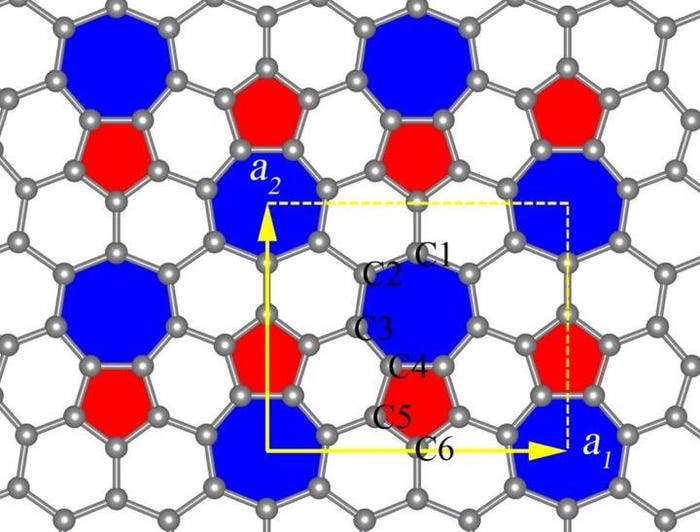September 4, 2015
A international team of researchers have used a computer simulation to predict the existence of a new carbon material known as "phagraphene."
Qmed Staff
|
Phagraphene is a sibling to graphene with unique properties. |
Graphene, it turns out, has many siblings. We recently profiled black phosphorous, but there are also other similar materials that can be made out of other single elements and combination of elements, such as HITP and nickel ions.
Perhaps some of these materials are easier to use than graphene, which as The New Yorker put it last year may be the "remarkable substance ever discovered" but then asks: "what is it for?"
A statement discussing the properties of phagraphene is somewhat vague on the subject, just stating that it "possesses all the other properties of graphene that allows it to be considered an advanced material for flexible electronic devices, transistors, solar batteries, display units and many other things."
The material should behave differently, in that the velocity of electrons traveling through it is depends on the direction they are introduced into the material. Graphene is different in this regard. "It would be very interesting for future practical use to see where it will be useful to vary the electron velocity," Artyom Oganov says.
That is described less precisely than another new nanomaterial made from boron, nitrogen, carbon, and oxygen announced last month, which researchers say can be used in everything form 20-megapixel arrays for cellphone cameras to photodetectors to atomically thin transistors.
The phagraphene material was discovered by a cadre of researchers from Russian, the United States, and China. Artyom Oganov of the Moscow Institute of Physics and Technology (MIPT) was the lead researcher on the project, who explains that the material differs from graphene, which has a hexagonal honeycomb structure of carbon atoms. "[P]hagraphene consists of penta-, hexa- and heptagonal carbon rings," he says. "Its name comes from a contraction of Penta-Hexa-heptA-graphene."
The research was recently published in Nano Letters.
Learn more about cutting-edge medical devices at MD&M Philadelphia, October 7-8. |
Like what you're reading? Subscribe to our daily e-newsletter.
About the Author(s)
You May Also Like



